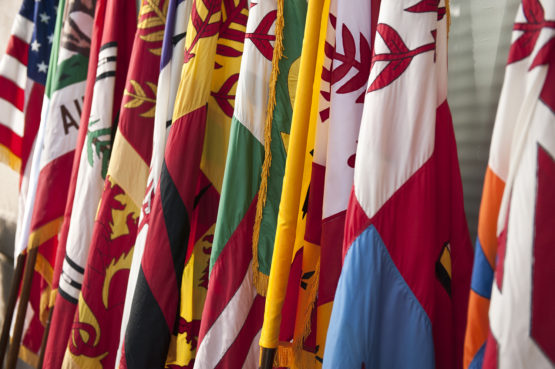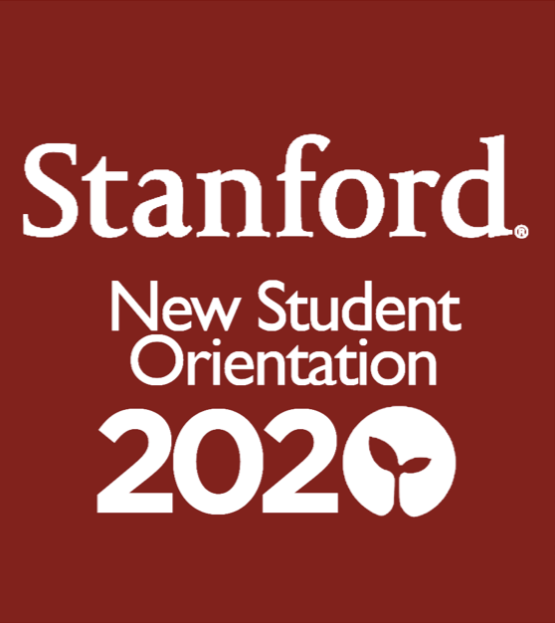Convocation marks beginning of New Student Orientation at Stanford
The 130th Convocation on Wednesday marks the beginning of the academic year and of New Student Orientation for first-year students and transfers.
Convocation, the traditional beginning ceremony of the academic year, will be held virtually on Wednesday, Sept. 9, at 1 p.m., and all members of the campus community are invited to participate.

The 130th Convocation marks the beginning of the academic year and of New Student Orientation for first-year students and transfers. (Image credit: L.A. Cicero)
The 130th Stanford Convocation will feature welcoming remarks to new students and their families from President Marc Tessier-Lavigne, Dean for Religious Life Rev. Dr. Tiffany Steinwert, Dean of Admission and Financial Aid Richard Shaw, Vice Provost for Undergraduate Education Sarah Church, Senior Associate Vice Provost and Dean of Students Mona Hicks and ASSU President Vianna Vo, ’21. Juliann “Juju” Hallum, ’20, will deliver an acknowledgment during Convocation that recognizes Stanford is located on the ancestral land of the Muwekma Ohlone.
The online, prerecorded ceremony will feature speakers in iconic locations throughout campus to give new students and their families a sense of the Stanford campus, even remotely.
New Student Orientation
Convocation also marks the beginning of New Student Orientation (NSO), the often exuberant and always engaging series of events designed to introduce new students to the academic, cultural and social life at the Farm.
This year’s events will occur exclusively online, including for the small number of undergraduates whose special circumstances have resulted in permission to live on campus during the COVID-19 pandemic. Those students will be housed in Escondido Village Graduate Residences under the guidance of Student Affairs community directors.
Edith Wu, associate dean and director of New Student Programs, said the university’s August decision to forgo plans to house some undergraduates on campus during autumn quarter and instead to focus on remote learning caused significant changes in NSO events. But Wu is confident the events will nevertheless help prepare first-year students for the beginning of classes Sept. 14.
“Early on, we knew New Student Orientation had to be virtual because of social distancing regulations,” Wu said. “There was no way we were going to pack Memorial Auditorium with new students. We have always assumed that the NSO experience was going to have to be virtual. But we imagined that students would be on campus experiencing NSO together in community.”
Given the restrictions caused by COVID-19, Wu, her staff and the six student orientation coordinators have been concentrating on how to infuse online events with the same excitement that has traditionally characterized NSO.
“We know that our activities will now be experienced by students on their own and located all over the world and in different time zones,” she said. “Plus, we are aware that many of our students have family responsibilities at home. So, we have been thinking about how they can feel connected and have a sense of belonging while respecting that their circumstances may be quite challenging and that we won’t have their full attention.”
Pared down schedule
Wu said she and her staff pared down the NSO schedule, concentrating on events considered most crucial to creating connections and an understanding of Stanford’s expectations and opportunities.

Those efforts required less of a pivot from previous years and more of a sidestep. That’s because the university’s programming for new students – called Approaching Stanford – actually begins as soon as students are admitted and involves everything from placement tests to filling out health forms to taking required courses on alcohol education and the Honor Code.
With that foundation already laid, Wu said she and her staff were able to focus on events that can only occur during New Student Orientation, including Faces of Community, which stresses the rich and broad diversity of the Stanford student body.
Another mainstay of NSO, Discover Stanford – which generally addresses the purpose of a liberal education – has been reimagined for a virtual audience. This year, Church, vice provost for undergraduate education, will conduct a discussion and question-and-answer session for new students with President Tessier-Lavigne and Provost Persis Drell. The session will also feature a slideshow of photographs contributed by continuing Stanford students to portray for their new colleagues a sense of the Stanford community.
The popular Three Books Discussion, Stanford’s signature common reading program for first-year students, will be held Friday morning. Students will have the opportunity to interact with Angela Duckworth, author of Grit, and Bettina Love, who delivered the TED Talk “Hip hop grit and academic success.” Three Books includes a series of readings and videos on the theme Education and Culture. Rather than culminating during NSO, as in past years, Three Books will continue as a discussion series into the academic year. Ta-Nehisi Coates, author of Between the World and Me, will join students for a conversation on Oct. 2.
On the last day of NSO, Saturday, Sept. 12, Drell will welcome parents, guardians and families to an event featuring Student Affairs staff offering advice about supporting students through this year.
Hanging out
Wu said her staff have also been trying to build community informally among new students through offerings such as regularly scheduled NSO “hangouts” and summer “First LOOC” discussion sessions with the student orientation coordinators (OCs). The Stanford Band has contributed a video that evokes the Band Run that, in past years, has engaged first-year students into a raucous celebration of Cardinal spirit.
It’s the “small touches” of NSO that Wu hopes will convey the Stanford experience to new students. Wu said she is grateful to the many members of the university community who have contributed to reimagining NSO in light of limitations created by COVID-19.
“We know that, ultimately, it is the folks who are contributing who will provide that sense of warmth that characterizes Stanford,” she said.
